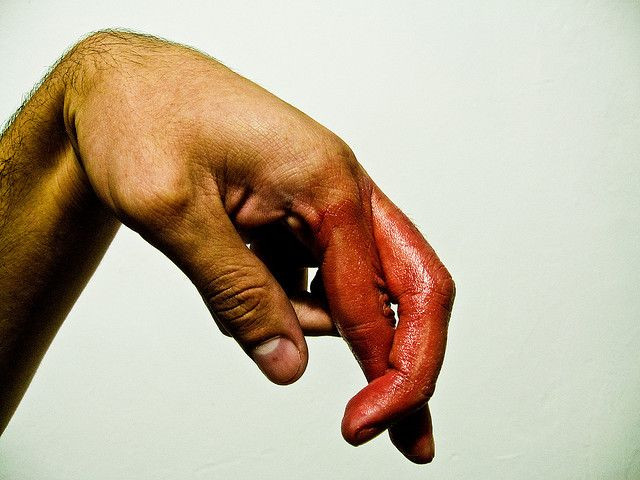HIV As The Cause Of AIDS Turns 30: How Far Has Treatment Come, And Where Is It Going?

Thirty years ago today, Secretary of Health and Human Services Margaret Heckler announced before Washington that scientists had discovered the cause of acquired immunodeficiency syndrome (AIDS), and it was, she said, “a variant of a known human cancer virus."
The assessment was mostly correct. Her later forecast — that a vaccine would be developed within two years — was not. Three decades later and the world is still without a vaccine, let alone a cure. As of this year, according to the Centers for Disease Control and Prevention, HIV has led some 30 million deaths worldwide since the epidemic began in 1981. Each year, roughly 2.5 million people contract the virus, with 50,000 of those infections occurring in the U.S. It is among the top 10 deadliest diseases on the planet.
The Breakthroughs
That’s not to say science isn’t putting up a valiant fight. In the 30 years since Secretary Heckler made the historic announcement, for example, researchers have uncovered that HIV isn’t just an ordinary virus. It comes from a family of retroviruses, which means it encodes its own genome in the host in a backward process from other viruses. This makes detecting the virus prior to infection extremely difficult, and part of the reason 1.1 million people are living with HIV in the U.S., while 16 percent of those people don’t know they’re infected.
Dr. Robert Gallo, the co-discoverer of HIV as the cause of AIDS, says that of discoveries made in the last 30 years, the advances that strike him as the most monumental happened slightly before the causal discovery, namely, the ability to treat viruses. “It was thought you’d need laser-sharp therapy to inhibit a virus without destroying our cells in the process,” Gallo told Medical Daily. But even in the 1970s, it was found that many retroviruses, including HIV, were susceptible to straightforward attack. “This proved to the pharmaceutical industry that it was doable, and they came running in.”
In the years that followed, the rush to develop antiretroviral therapies has accelerated immensely. Most recently, in 2012, the Food and Drug Administration approved Truvada as the first and only drug intended to prevent the spread of HIV infection. However, due to poor public awareness, and despite scientific research that dispels such myths, the drug has developed a reputation as a recreational drug used to increase sexual behavior.
Meanwhile, other progress has been made in early treatment, to an extent Gallo called a “functional cure” — where the infection hasn’t exited the body, but the patient has left viral therapy. Two babies have been reported in remission from their HIV, as the infection was passed to them in utero, then treated within hours after the mother gave birth. Such advances offer glimmers of hope in a field that must otherwise rely on lifetime HIV management if sufferers are to live normal, healthy lives free from outside infection from third-party diseases.
Cancer is one of these hurdles, Gallo points out. In his current research, performed at the University of Maryland: College Park and the Global Virus Network, a collaboration founded in 2011 by Gallo and a group of like-minded colleagues, Gallo seeks to understand the carcinogenic role HIV can play in host victims. For instance, Kaposi’s sarcoma, a cancerous tumor often associated with AIDS, but caused by the human herpesvirus 8, is invisible in the presence of HIV. But HIV also increases the replication of the virus, increasing its presence. “So a wimpy virus becomes carcinogenic, giving rise to Kaposi’s sarcoma, which has now virtually disappeared for people who have access to therapy,” Gallo said. These, he explains, in combination with insights into lymphoma, have been the “greatest advances” in HIV research.
For the Next 30 Years
One of the paralyzing limits of these advances, however, is that learning how to fix the problem doesn’t mean science can do it — similar to the way your brain knows it’s looking at an optical illusion, but that knowledge does nothing to shake the illusion’s effect. Developing a vaccine for HIV needs the development of durable antibodies that can fight the virus quickly enough, before the virus mutates, and broadly enough to cover the various forms of HIV.
“We know these antibodies exist in infected people, but after a long wait and after a lot of different variants of the virus emerges,” Gallo said. “We need to be able to have them at the get-go before infection.”
An intermediate hurdle is public awareness — much of what’s stopping wider acceptance of HIV as a disease on-par with cancer is the leftover stigma from the 1980s. This demotivates people to seek treatment, ultimately hamstringing science’s ability to draw upon new cases for research. Politically, the hope of finding a cure is present: Last year’s World AIDS Day in December saw the White House set aside $100 million for HIV research. More broadly, however, the current fight motivates people to overcome the inertia of complacency and stop seeing HIV as an impenetrable wall — even if science does have its limits.
“There are still resistant variants that emerge, and there are a lot of people that are infected that are not being treated,” Gallo explained. But even with the catalog of people treating those who carry the disease in the best of circumstances, patients still have an increased risk for cancer, cardiovascular disease, and still take drugs they’d prefer not to take. “So, as a society, it is important that there not be complacency, but also as an individual.”



























